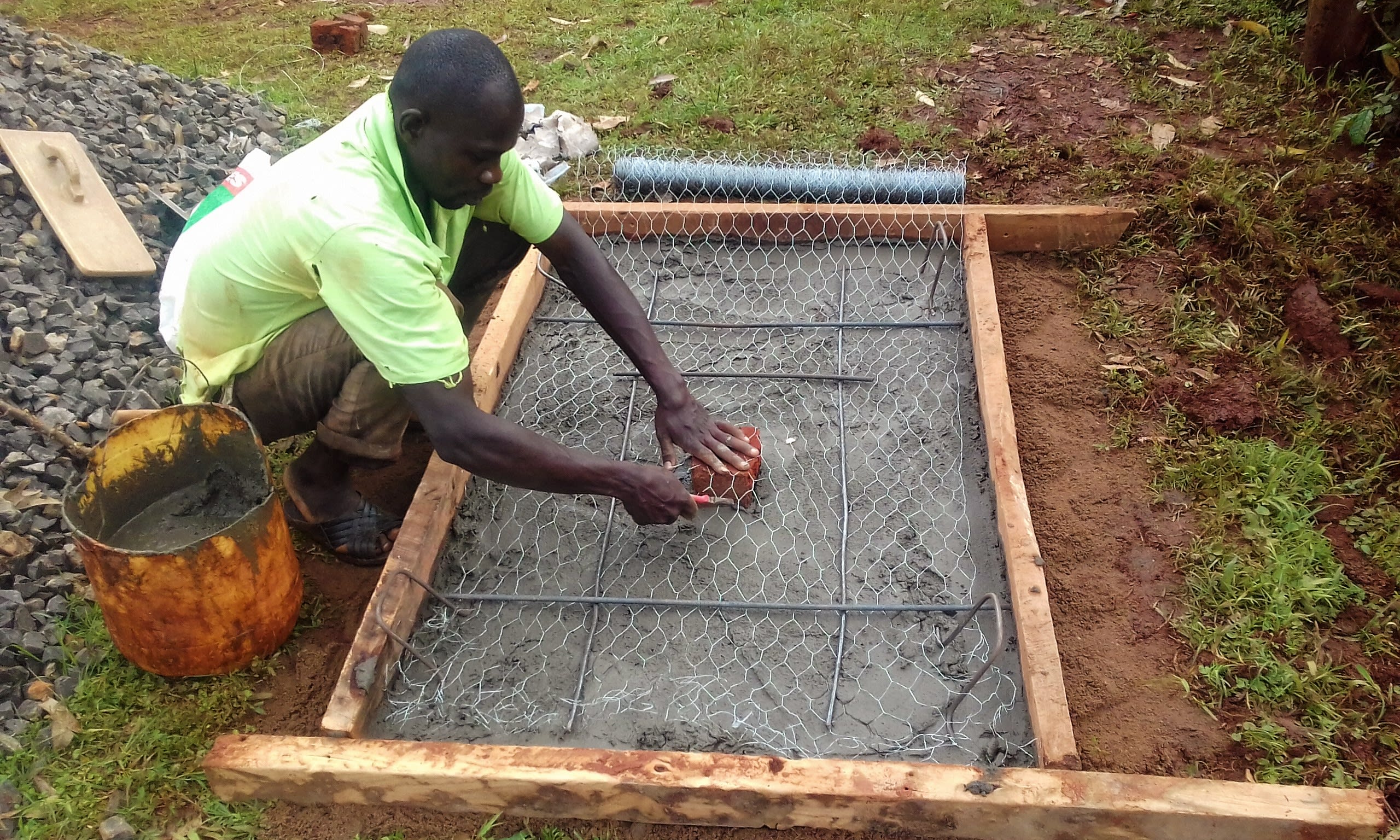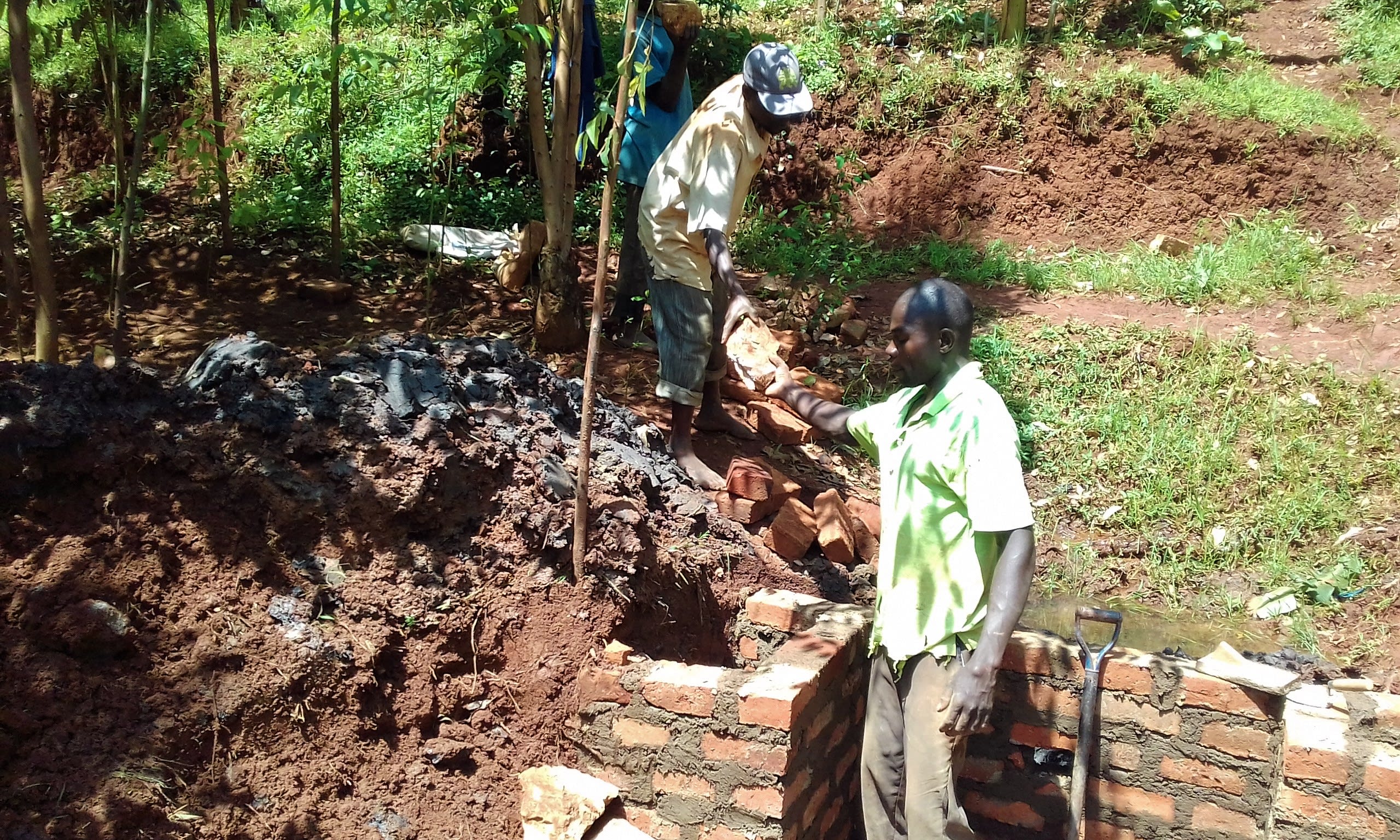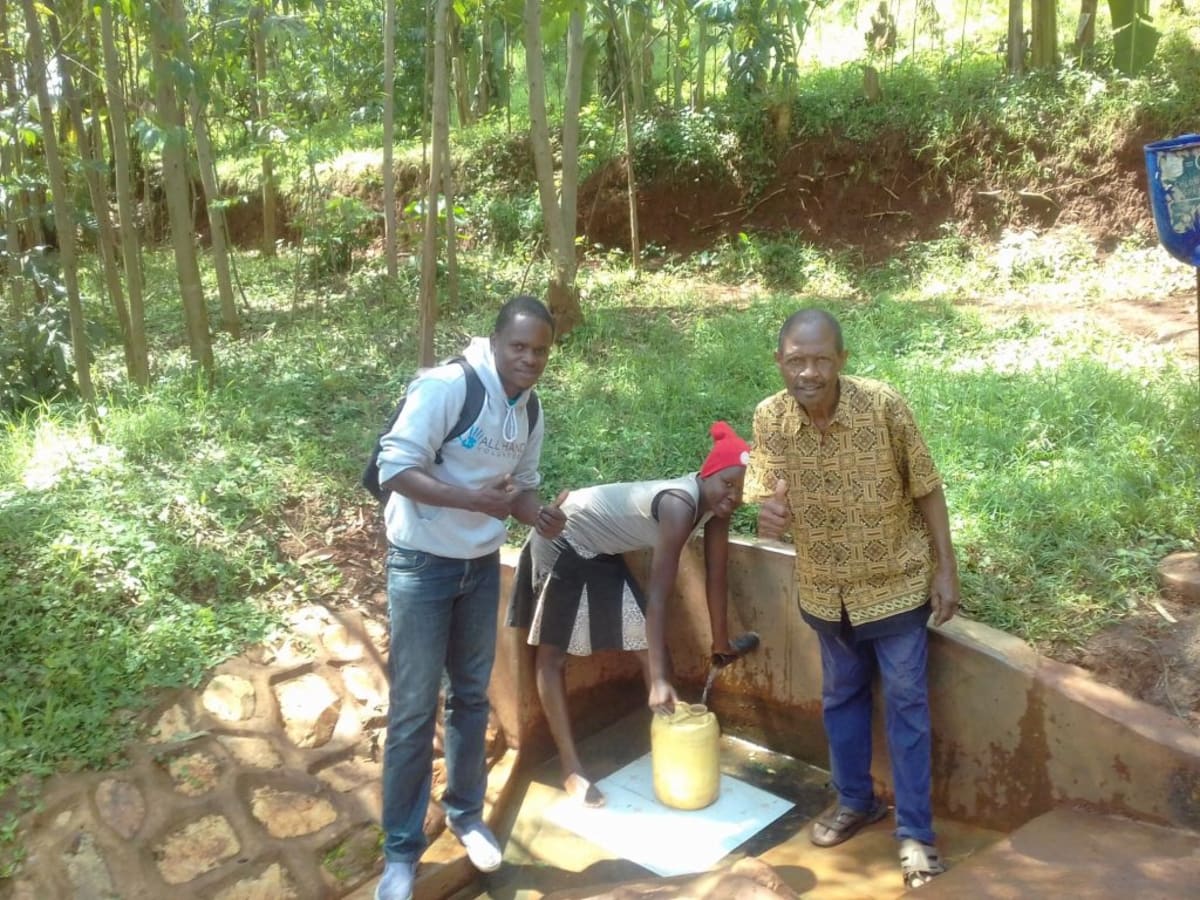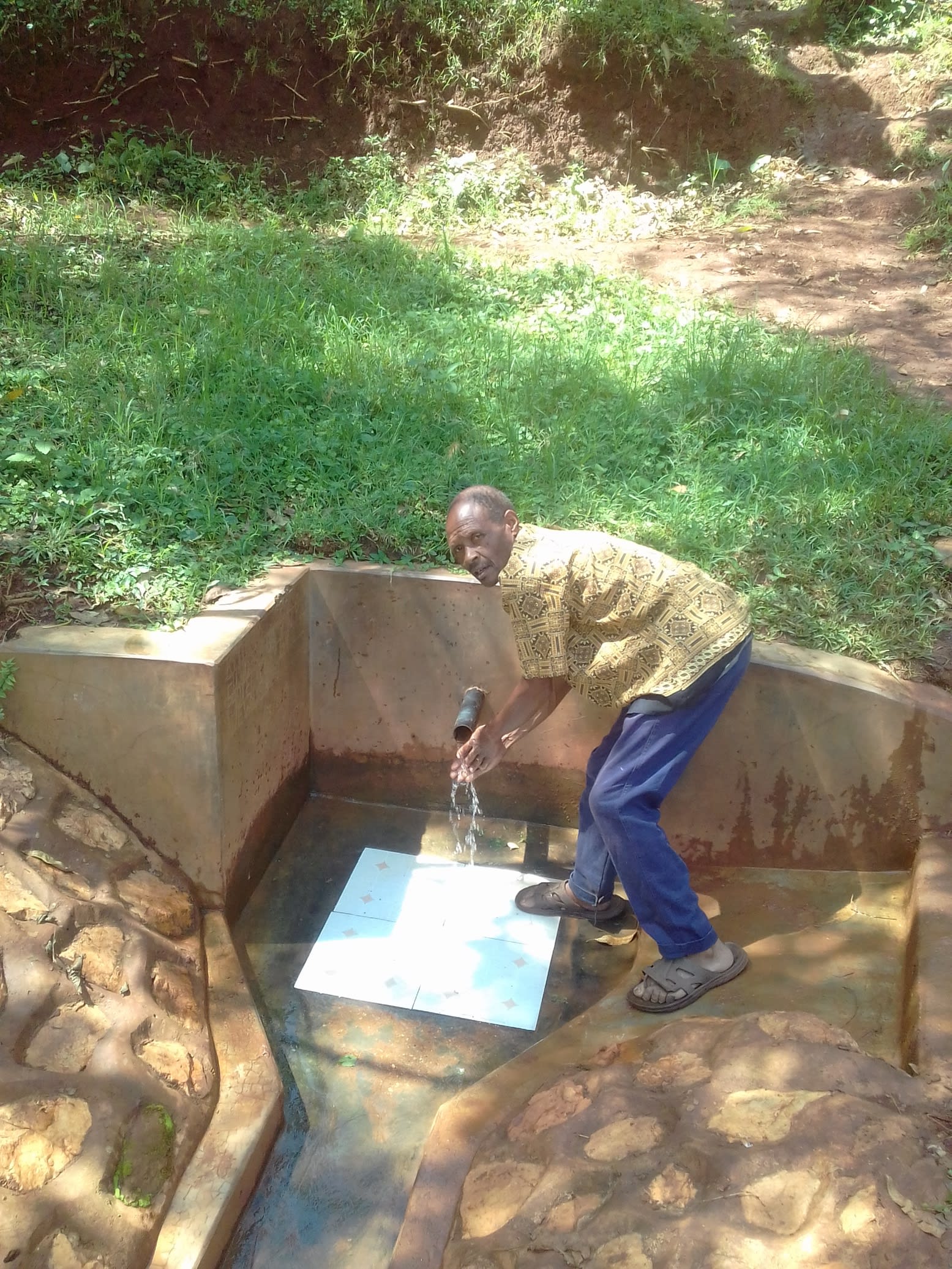This project is a part of our shared program with Western Water and Sanitation Forum (WEWASAFO). Our team is pleased to directly share the below report (edited for clarity, as needed).
Welcome to the Community
A majority of Wanzuma community members are peasants who rely on farming, small business enterprises and casual labor to make ends meet. Wanzuma Village is unique in that there are people involved in tea farming, even though there are no tea factories around the area.
Water Situation
Wanzuma Spring is dangerous because the catchment area is exposed to contaminants either as a result of human interference or runoff from storm waters. When it rains, chemicals, feces, and other waste washes into the water.
Women and children dunk small containers into the water pooled there, because it's too shallow for their buckets, pots, and jerrycans. The small jar or cup has to be continuously dunked in order to fill the larger container! When it is delivered back home, it is separated for use between the kitchen, latrine, and living room. Water stored in the living room is covered because it is intended for drinking. After drinking Wanzuma Spring’s water, community members suffer from waterborne diseases like typhoid.
Sanitation Situation
A little over half of households have their own pit latrine. These are made of wood floors and banana leaf, plastic, or mud walls. The families who don’t have their own pit latrines either share with neighbors or seek the privacy of bushes.
Some other households have bathing rooms, and a couple hand-washing stations were observed. Most families throw their garbage near the garden to be composted and used as fertilizer. Any waste that doesn’t decompose is burnt.
Plans: Hygiene and Sanitation Training
Community members will attend hygiene and sanitation training for at least three days. This training will ensure participants are no longer ignorant about healthy practices and their importance. The facilitator plans to use PHAST (Participatory Hygiene and Sanitation Transformation), CLTS (Community-Led Total Sanitation), ABCD (Asset-Based Community Development), group discussions, handouts, and demonstrations at the spring. One of the most important topics we plan to cover is open defecation and its dangers, as well as having and using a pit latrine.
Training will also result in the formation of a committee that will oversee operations and maintenance at the spring. They will enforce proper behavior around the spring and delegate tasks that will help preserve the site, such as building a fence and digging proper drainage. Participants will even learn about other important topics like family planning!
Plans: Sanitation Platforms
On the final day of training, participants will select five families that should benefit from new latrines.
Training will also inform the community and selected families on what they need to contribute to make this project a success. They must mobilize locally available materials, such as bricks, clean sand, hardcore, and ballast. The five families must prepare by sinking a pit for the sanitation platforms to be placed over. All community members must work together to make sure that accommodations and food are always provided for the work teams.
Plans: Spring Protection
Fetching water is predominantly a female role, done by both women and young girls. Protecting the spring and offering training and support will therefore help empower the female members of the community by giving them more time and efforts to engage and invest in income-generating activities.
In addition, protecting the spring will ensure that the water is safe, adequate and secure. Construction will keep surface runoff and other contaminants out of the water. Mr. Jackson Ososi, the village elder, said "A protection of this spring will enable the community members access clean and safe drinking water. This will help eradicate spread of waterborne diseases as was experienced [in the outbreak] some years back."

 Protected Spring
Protected Spring
 Rehabilitation Project
Rehabilitation Project



































